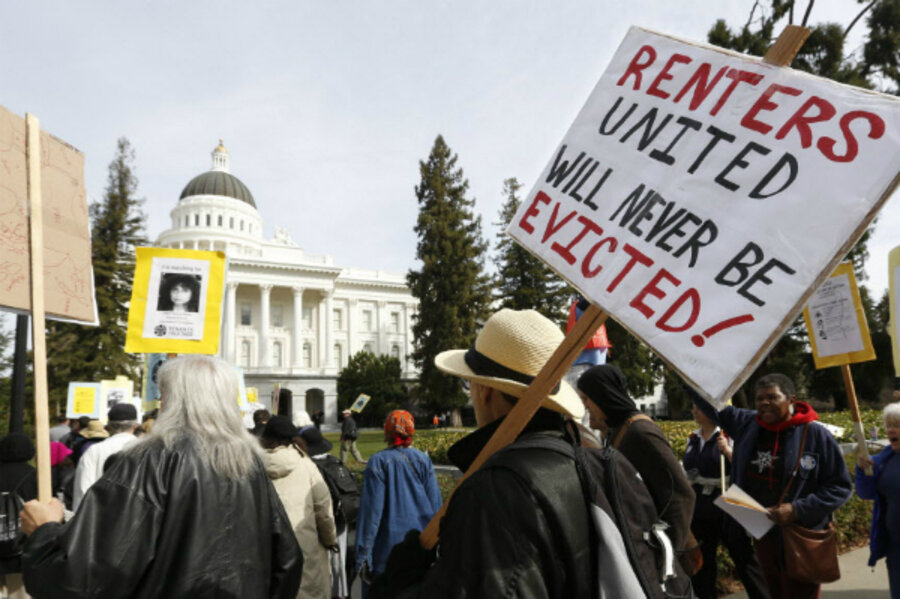More Americans are renting: why the cost is so high
Loading...
| WASHINGTON
For most Americans, there seem to be two types of rental housing in the US these days: pricey and unaffordable.
That’s a glib way of summarizing a troubling trend. Despite a sharp plunge in home prices and the conversion of many properties from “owned” to “rented,” the typical family looking to rent has to pay more than 30 percent of its income for a typical apartment, according to an annual survey released Monday.
For the 1 in 4 renters who have very low incomes, moreover, it’s common to spend more than half their earnings on rent.
And, because the home-price bust left behind a wave of foreclosures and a weak job market, more American households are renting now than before the recession.
“Renting in the US is on the rise, and there is simply not enough" supply of affordable units, said Althea Arnold of the National Low Income Housing Coalition, in releasing the report.
The annual report, “Out of Reach,” draws its title from a rule of thumb: that households shouldn’t spend more than 30 percent of their income on housing, yet in many cases they end up stretching to do so because of market conditions.
The report’s 2014 edition, drawing on 2012 figures, estimates that the nation needs about 7 million new units for affordable to “extremely low income” households – those that earn less than 30 percent of the median income in their area.
Concern about housing costs is nothing new.
But US Housing Secretary Shaun Donovan has called conditions in the current rental market a “silent crisis” for the economy.
“We are in the midst of the worst rental affordability crisis that this country has known,” he told an audience in December.
The foreclosure wave, while on the one hand creating an inventory of homes that investors have converted into rentals, caused an even bigger conversion of households from owners into renters.
In just four years, from 2007 through 2011, the number of families paying half or more of their income for housing or living in severely substandard housing spiked by 43 percent, to some 8.5 million people, Secretary Donovan said.
Tight federal budgets, meanwhile, have put a squeeze on federal resources to boost affordable housing.
Even as the number of very low-income renters has grown since 2007, the likelihood of getting assistance, such as housing subsidies, has diminished, according to another recent report by the Joint Center for Housing Studies at Harvard University.
Housing experts see a range of possible solutions that could ease the housing-cost burden.
Overall improvement in the economy – driving wages and employment opportunities – is one of the broadest and most obvious. This has been happening slowly.
Another is building more multifamily housing units – and specifically, more at the low end of the price spectrum. Already, builders are focused on the burgeoning rental demand. Although new units, by definition, aren’t generally those labeled “affordable,” a rising apartment supply is one way to put general downward pressure on rents. The question is how soon builders will keep pace with demand.
Public policy experts say the problem calls for both government assistance for needy families and federal and local efforts to stimulate production of affordable units.
“A growing number of jurisdictions have … put some form of requirements or incentives in place to include more affordable housing in larger developments,” the report by Harvard’s Joint Center said. “State and local governments are also under growing pressure to provide greater allowances for the construction of smaller units, higher-density developments, and rentals with fewer amenities.”
Monday’s report by the National Low Income Housing Coalition calculated a “housing wage” that would allow someone working full-time to afford a typical two-bedroom apartment in their area. This “housing wage” topped $24 dollars per hour in six states and Washington, DC.
Leading the list was Hawaii with required pay of $31.54 per hour, followed by Washington, D.C., California, Maryland, New Jersey, New York, and Massachusetts.








